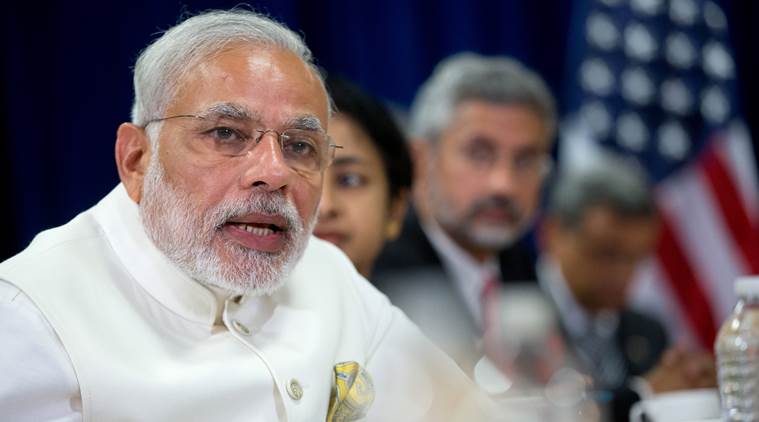Bihar polls: A PM with nationwide appeal vs one of the most popular CMs
In Bihar, as in many other states, “personalisation of politics” has got deeply entrenched. All the regional/local parties thrive on the personal predilections of their supreme leaders.
 Prime Minister Narendra Modi
Prime Minister Narendra ModiThe electoral mobilisation in Bihar has become more complex than ever. At one level, competitive politics of development is being played out. At another level, new sociopolitical alliances are being put in place. On top of all this is a flaunting of images and personalities; the electoral mobilisation has, in large measure, come to revolve around leaderships.
In Bihar, as in many other states, “personalisation of politics” has got deeply entrenched. All the regional/local parties thrive on the personal predilections of their supreme leaders. These leaders have been important not just for mobilisation but also for voter conversion. While personal images have tended to overshadow real issues as in the past elections, this time the “personality contest” has been framed slightly differently. Unlike in past elections, the contest is between Nitish Kumar (incumbent chief minister of Bihar) and Narendra Modi (prime minister of the country), who are leading their respective alliances from the front.
Though the grand alliance of RJD-Congress-JD(U) has two heavyweights, Lalu Prasad and Nitish Kumar, it is being led by the latter almost singularly. The reasons for betting on Nitish are obvious. Despite being chief minister for two full terms, Nitish Kumar has no serious allegations of corruption or favouritism against him. In the media and other circles, he has been rated among the best performing chief ministers of India. Given his clean image combined with a track record of improving governance and bringing in some measure of development, Nitish is arguably the most popular leader in the state.
To counter the leadership advantage of the grand alliance, the NDA has cleverly pitted Modi against Nitish. Doubtless, Modi stands out as the most popular political personality of the day. Unlike others, his popularity runs high across social and spatial boundaries. Not only does he wear the hat of “developmentalist”, he has an ability to connect with a public of all hues. He chooses to speak the language most people understand, he talks of what most people wish to listen to. His persona is not only charming but also carries a great deal of credibility. In the Lok Sabha elections, this persona made a deeper impact on a large section of voters across the social spectrum. This helped the BJP register its best performance ever in the state.
Who is likely to win the current “personality contest”? Or, which political personality — local or national — is likely to influence the voter more? Election surveys conducted by the Centre for the Study of Developing Societies during the 2014 elections offer us some clues. It has been observed that if a national election takes place when a state assembly election is round the corner, the verdict of the national election could well be a reflection of the general mood of voters for or against the party/leader in power in the state.
The verdicts in the national election (2014) and assembly elections that coincided with it or were held thereafter seem to corroborate this observation. The assembly elections in Andhra Pradesh coincided with the Lok Sabha elections; assembly elections in Haryana, Jharkhand, Maharashtra and Jammu and Kashmir were held thereafter. A close look at the findings of a CSDS survey suggests that barring Prithviraj Chavan (then chief minister of Maharashtra who performed marginally better than others), the majority of people were dissatisfied with the performance of their respective chief ministers. In all these states, the ruling party performed miserably not only in the Lok Sabha election but also in the simultaneous or subsequent assembly elections. Interestingly, the NDA did not project a chief ministerial candidate in these states, excluding Andhra Pradesh. Rather, it rode the “Modi wave”. This strategy worked well.
By not projecting a chief ministerial candidate in Bihar, the NDA seems to be using more or less the same strategy. It is true that Nitish’s image did not benefit the JD(U) electorally in 2014. But it is also true that
people rated him positively on his performance. The net satisfaction rate (+33%) with Nitish’s performance is the highest among all chief ministers who have faced assembly elections after the Lok Sabha polls. Given this, it may be quite difficult for the NDA to win this round of the “personality contest”, although the popularity of Modi and his intense campaigns should help it perform reasonably well.
The writer is assistant professor with CSDS, Delhi.
This article is part of a series from Lokniti-CSDS that analyses various dimensions of Bihar politics using evidence from surveys by Lokniti over the last two decades.





- 011 day ago
- 021 day ago
- 031 day ago
- 041 day ago
- 051 day ago



























